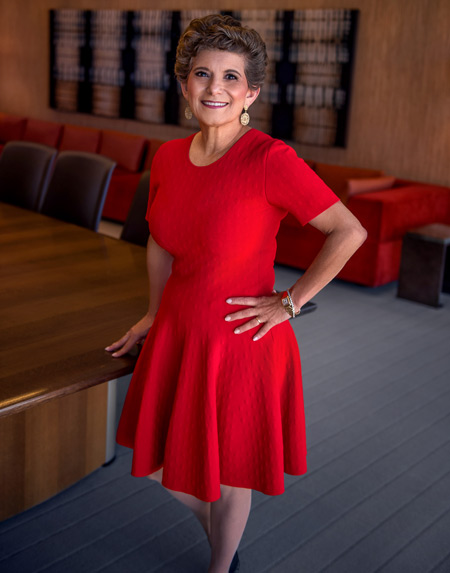The equity market cap at Ventas, Inc. (NYSE: VTR) was about $200 million in 1999 when Debra A. Cafaro first joined the health care REIT as CEO. Over the past 23 years, Cafaro has helped grow that to a peak of $28 billion. She calls it a “business fairytale.”
Long before she was a top REIT industry CEO though, Cafaro’s diverse career path took her from law, working as an attorney for 13 years, to making the major career change to business. Working today in the large, dynamic sectors of real estate and health care, Cafaro encourages young people to be open to career possibilities, just as she has always been.
Today, Cafaro has a passion for the health care sector, where she stresses that care is delivered and cures are discovered; and she believes health care is critical in every person’s life. As Ventas’s leader, she takes a broader perspective, too, noting that the demand for health care means it’s a reliable revenue stream.
As part owner of the Pittsburgh Penguins, with two Stanley Cup rings to show for it, Cafaro is rooted in the values of sports, family, and her hometown of Pittsburgh, Pennsylvania. As a leader, she is focused on reinvigorating and reinforcing Ventas’s team culture, while also making sure the REIT is focused on elevating and diversifying its board, workforce,4 and communities.
Emerging from the pandemic, Cafaro says she is optimistic about Ventas’s future, with demographic demand on the company’s side and strong opportunity for growth ahead.
Cafaro recently spoke with REIT magazine about how she helped turn Ventas around over 20 years ago, mentors who are also friends, and getting to witness the Pittsburgh Steelers’ famed Immaculate Reception with her father in 1972.
What led you to join Ventas?
In 1999, Ventas was in crisis and in the midst of a significant turnaround. I was asked by one of my mentors who was on the board at that time to join the company as its CEO to try to turn things around and save it. It was an exciting challenge for me to take on, and also offered me a lot of opportunity.
There were immense, fundamental challenges that were existential. That was exciting and interesting to me. It also was a great opportunity because if we were able to save the company and ultimately build something of value for all stakeholders, it would be a tremendous accomplishment. I saw the demographic opportunity too. The first 13 years of my career were as a lawyer, so I had been a business executive for less than two years at the time the Ventas CEO opportunity came to me. It was just the kind of opportunity that I thought I could take on. And yet I would say that it was challenging enough that most established executives would not have been interested in it.
But for me, the chance to learn how to be a CEO, the chance to build something of value, and frankly, the chance to learn about health care, which represents nearly 20% of gross domestic product (GDP) and is so important in everyone’s life—it was a great opportunity. I was also able to work with Doug Crocker, who had been the CEO of Equity Residential, and I trusted him. That enabled me to take the leap of faith and join Ventas in 1999.
Health care has come even more so to the forefront throughout the pandemic. How does Ventas’s business operate?
Ventas operates at the exciting intersection of health care and real estate, and those are each nearly 20% of GDP. Ventas itself owns about 1,200 assets in the U.S., Canada and the UK, and it’s a portfolio that’s unified by demographic demand. We have a number of different verticals that are driven by demand from a large and growing aging demographic. Everything from senior housing, where we cater to the 80-plus population, the single fastest growing segment of the U.S. population; to life science on the other end, which really is based upon finding cures and treatments for diseases and helping people live longer, healthier lives; and everything in between, such as medical office, where we cater more to the 65-plus demographic, and where 10,000 baby boomers are turning Medicare-eligible every day in the United States.
That unifies our business. It is mission-driven in the sense that our sites are where care is delivered, it’s where cures are discovered, and it’s where people go to get health care. Health care is so important in people’s lives. At the same time, because of the demand, it also produces reliable, growing cashflow, which is what it’s all about from a REIT perspective.


